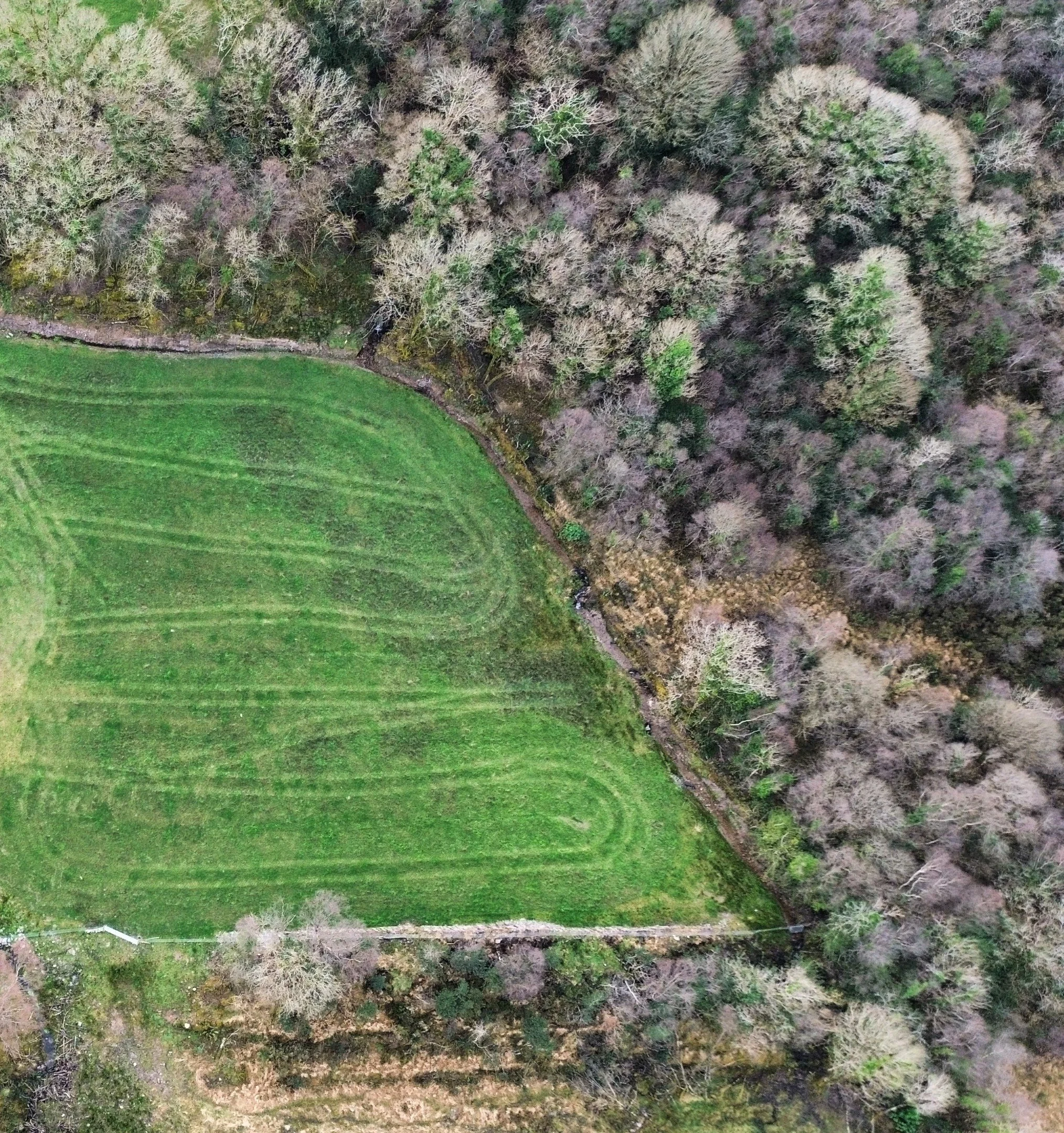
Why create woodlands on your farm?
Woodlands have many benefits for farmers and non-farming landowners. Scroll down for the various supports that are available for native woodland creation and restoration.
Financial resilience: Forestry grants can provide a tax-free income stream of up to XXX, which can help to diversify your operations and improve your economic resilience.
Livestock protection: Trees offer shelter and shade, protecting livestock from extreme weather. This can lead to healthier animals and potentially lower veterinary costs.
Soil stability: The roots of trees help prevent soil erosion by stabilising the ground, protecting valuable topsoil and maintaining soil fertility. Trees can also improve the trafficability of land.
Water quality: Trees reduce runoff and filter pollutants before they reach water bodies. This results in cleaner rivers and lakes, which benefits both ecosystems and human water supplies.
Biodiversity: Trees provide habitats and food for various wildlife species, promoting biodiversity. They help to create a more balanced and resilient farm ecosystem.
Recreational spaces and well-being: Access to woodlands is proven to enhance mental and physical well-being. For many farmers and landowners, the creation of woodland becomes a source of long term satisfaction and pride.
Fuel and materials: Biomass fuel, fence posts and sawn timber can all be extracted from woodlands.
Points to remember:
Native woodlands can be created in some SACs and SPAs but they will complicate the process or disqualify applications in certain cases.
Peat soils may not be planted. This rule is being strictly enforced. Wet mineral soils may be planted.
When considering forestry, even native woodlands, it is important to not displace existing habitats on your farm. Scrub and species-rich farmland can also be valuable.
As a diversifying land use, forestry has been shown to outperform traditional drystock enterprises. This will increase further as carbon pricing increases.
What would you like to do on your land?
Create a small farm woodland
The Native Tree Area (NTA) scheme will allow farmers to plant up to 1 hectare of native woodland on farmland and along watercourses outside the forestry licensing process.
One farm can have a maximum of two NTAs. The second one is intended to protect water and therefore is dependent on the presence of a suitable on-farm watercourse.
The NTA scheme will be paid at FT1 and FT2 rates. Premiums will be paid over 10 years rather than 20 at a rate of €2,206 per ha annually for NTA1 and €2,284 per ha annually for NTA2.
Create a large native woodland
FT1 (Native Forests) allows landowners to create native woodlands at scale. Trees are provided and planted. Fencing costs are typically covered for four years of maintenance by the establishment grant.
It is possible to put large areas of land into these schemes but it isn’t necessary to give up large blocks of land. Today, forestry is about integration on areas of ground that are awkward or unprofitable to farm. This can often be done without impacting production.
Premiums will be paid over 20 years at €1,142 per ha per year.
Protect old native woodlands
The Native Woodland Conservation Scheme allows landowners to protect and expand old native woodlands that satisfy a specific ecological criteria. This may involve fencing a site, removing invasive species, or other remediating actions.
The application must be submitted by a registered forester and an approved ecologist.
Premiums will be paid over 20 years at €1,142 per ha per year.
Continue farming and grow trees on the same land
Agroforestry allows farmers to continue to graze animals, make hay/silage, practice horticulture or tillage and grow trees on the same piece of land.
Trees can be planted in groups or lines at low densities in fields that can still be actively farmed.
Premiums will be paid over 20 years at €1,142 per ha per year.
Convert coniferous forest to native woodland
The Climate Resilient Reforestation Pilot Scheme allows landowners who previously planted coniferous forest through grant aid to convert this to a semi-natural native woodland.
Premiums will be paid over 20 years at a rate of €1,142 per ha per year.
Remember
You have full control of the design and management of woodland on your land.
You retain you existing BISS payment.
All premiums are tax free.
All costs of site preparation, planting and tree purchase are covered by grants.
Many landowners are receiving decisions on site plans in less than three months.
First steps to woodland creation on your land
Your local Teagasc advisor can help you for free. You can also go directly to a registered forester in your area who can submit your application for you.
For people living in the west of Ireland, Hometree can provide some support. Fill out this short form and one of our team will get in touch. Alternatively, contact our woodland partnership team on XXXXXXXXXXX.





